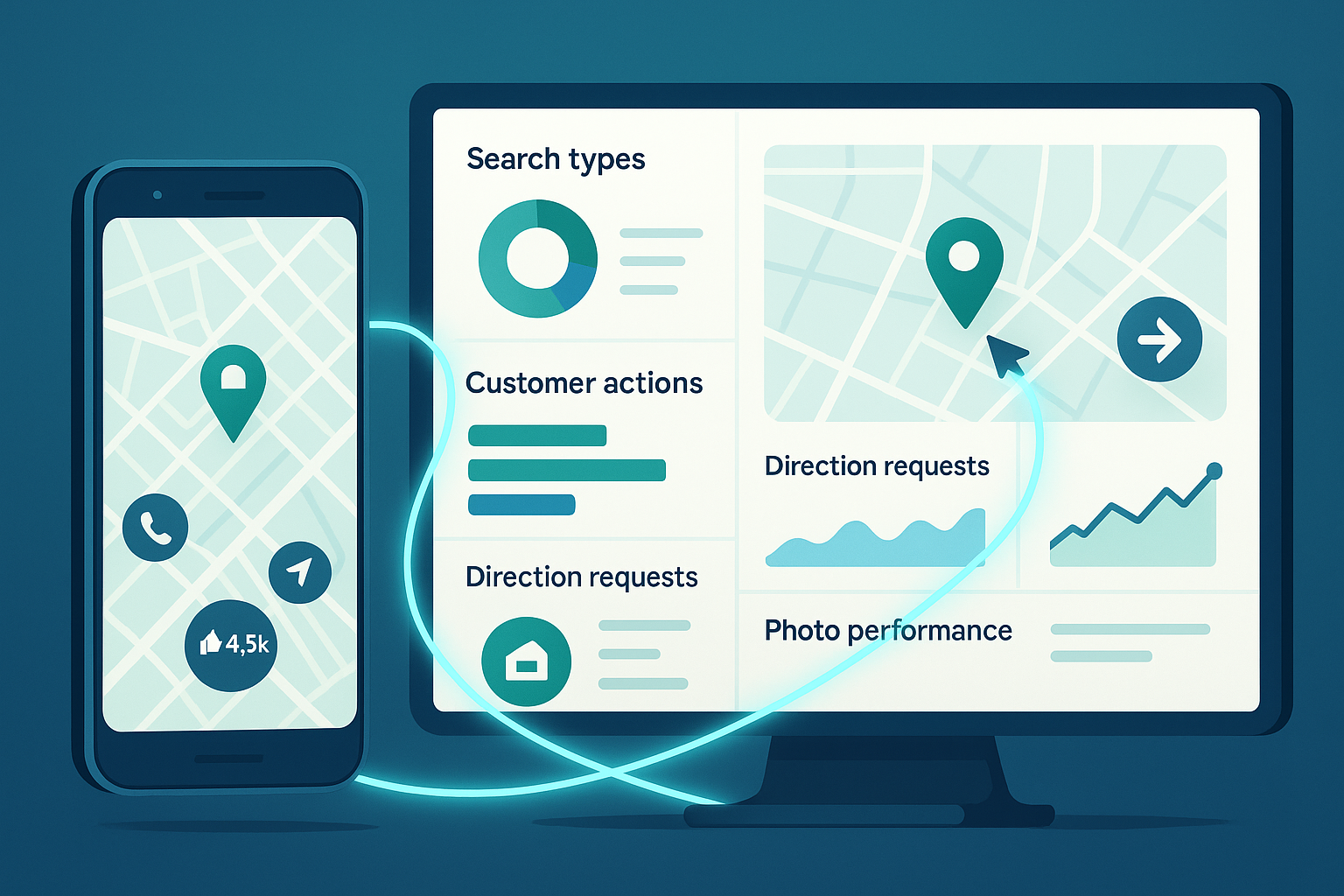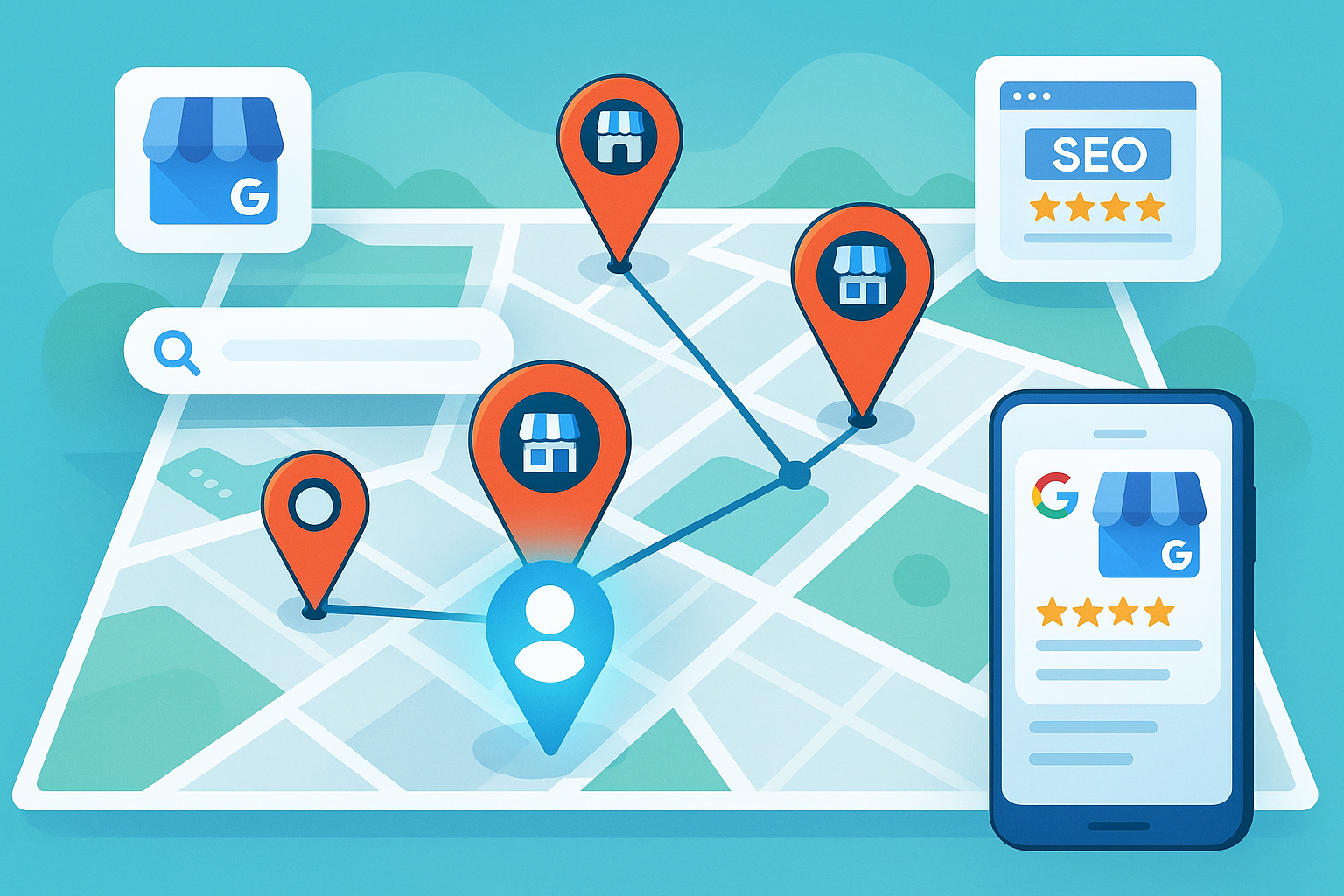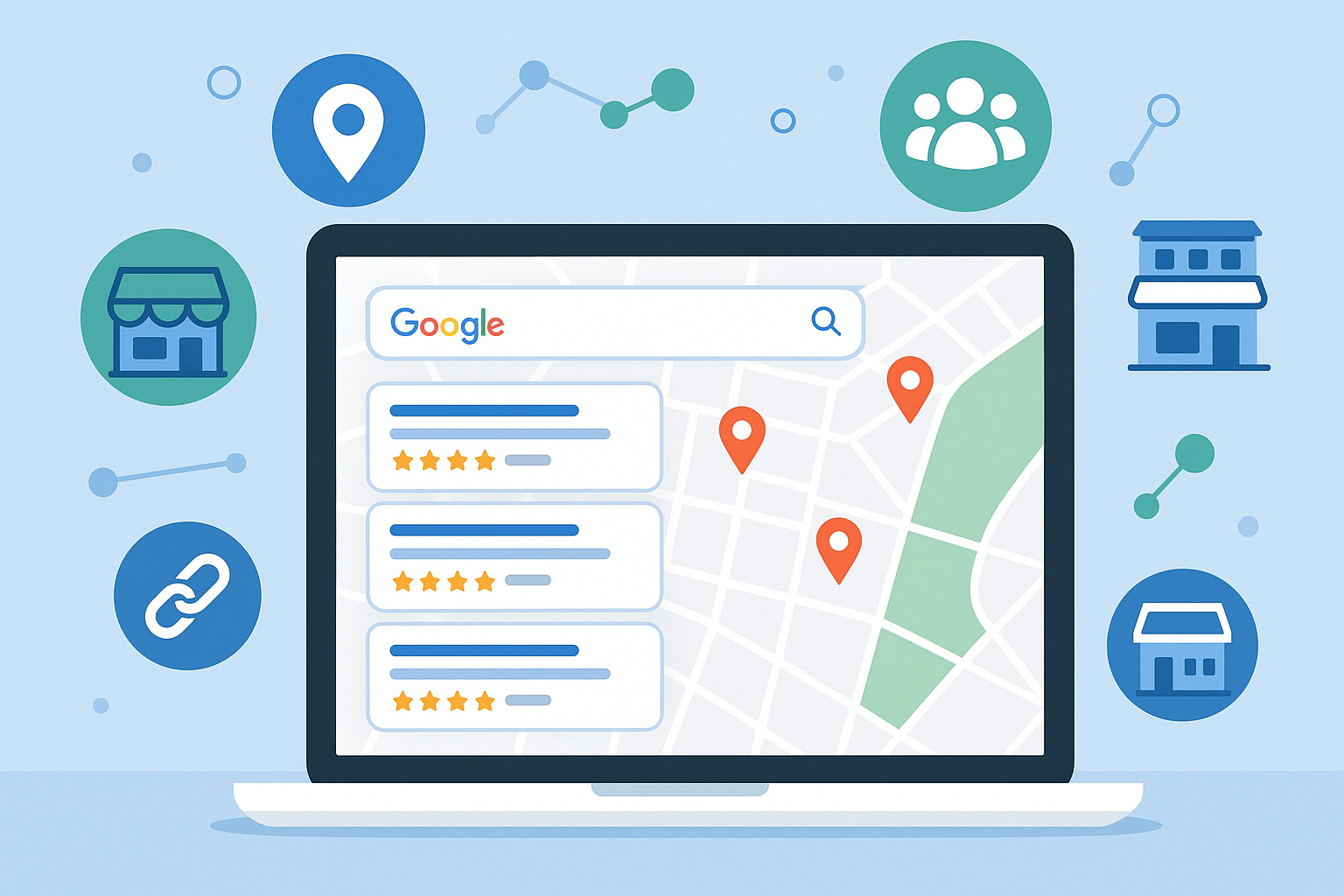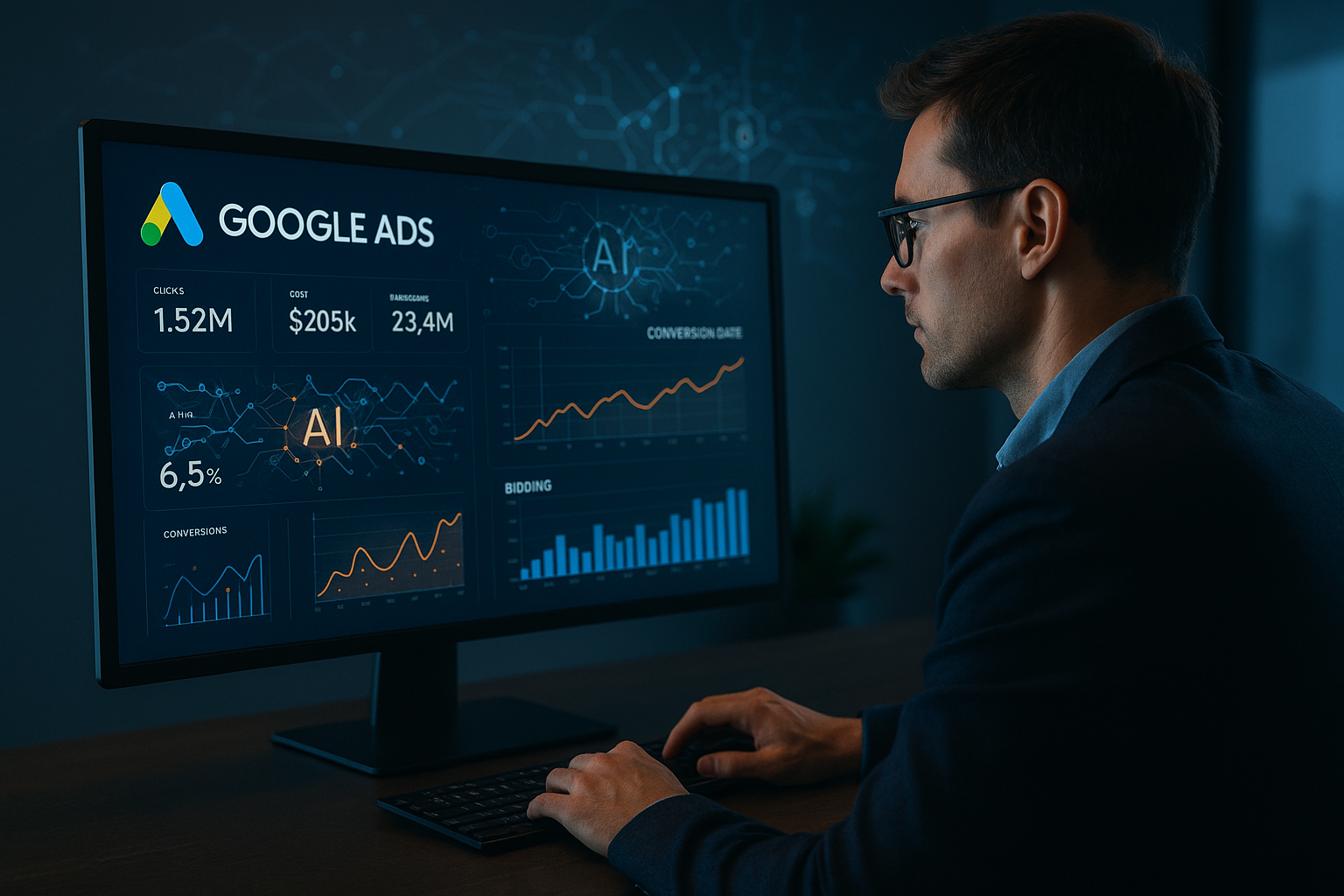What Are Geo-Tagged Images and Do They Help Local SEO?
Local SEO is all about visibility—showing up when nearby customers are searching for the products or services you offer. Businesses often focus on keywords, backlinks, and Google Business Profile optimization, but there’s another element that can make a difference: geo-tagged images.
If you’ve ever wondered whether adding location data to your photos can help boost your rankings in local search results or the Map Pack, this article is for you. We’ll break down what geo-tagging is, how it works, and whether it’s a useful tactic in your local SEO strategy—or just another overhyped trend.
Understanding What Geo-Tagged Images Are
In simple terms, geo-tagged images are photos that contain embedded geographic data—latitude, longitude, and sometimes additional location details such as city or region. This data is stored in the image’s metadata (known as EXIF data) and can show exactly where the photo was taken.
For example, if you take a picture of your restaurant’s outdoor seating area in Philadelphia, your smartphone or camera may automatically store that location information inside the file. When uploaded online, that image can communicate to search engines that it’s connected to a specific geographic area.
The main idea behind using geo-tagged images for SEO is to reinforce your local relevance—helping Google better understand where your business operates.
In local SEO, every small signal counts. While a single geo-tagged photo won’t instantly skyrocket your ranking, it contributes to a stronger overall local presence when combined with other optimization tactics.
How Geo-Tagging Works Technically
Every digital image contains a set of metadata, often referred to as EXIF (Exchangeable Image File Format) data. This data can include details like the camera model, time taken, aperture, and—when available—GPS coordinates.
Here’s how it works:
- When you take a photo on a device with GPS enabled, it automatically records the exact latitude and longitude.
- That information is stored inside the image file.
- When you upload the image to your website, social media, or Google Business Profile, the embedded data stays intact unless it’s stripped out during compression or upload.
Modern SEO tools and online services can help you add or modify geo-tags manually, which can be useful if your images were taken without location tracking enabled. Some businesses use this approach to geo-tag key visuals with their business address or city coordinates before uploading them.
However, while geo-tagging adds useful data, Google has become more cautious about how it interprets these signals—so the real value lies in how and where you use geo-tagged images.
Why Local Businesses Started Using Geo-Tagged Images
The use of geo-tagged images in SEO started gaining traction when marketers noticed that Google often considers contextual signals—including location metadata—to assess a business’s relevance for local searches.
For local businesses, geo-tagging was seen as a quick way to:
- Reinforce the physical location of their business.
- Help Google understand where their photos were taken.
- Support their Google Business Profile and Maps visibility.
Many small business owners, especially in competitive cities, began adding coordinates to their photos before uploading them to listings or websites. The idea was that Google’s algorithm could cross-reference the image’s location data with the business’s NAP (Name, Address, Phone) information and use it as an additional ranking signal.
While geo-tagging alone won’t replace strong SEO fundamentals, it can serve as supporting evidence of local activity—especially when combined with authentic photos taken on-site.
Do Geo-Tagged Images Directly Improve Local SEO Rankings?
This is the question most business owners want answered—and the truth is nuanced.
There’s no direct ranking factor in Google’s algorithm that specifically rewards geo-tagged images. Google has stated that it doesn’t rely heavily on EXIF data for ranking web pages. However, that doesn’t mean geo-tagging is useless.
Indirectly, geo-tagged images can help local SEO by:
- Strengthening local relevance signals when used on Google Business Profiles.
- Increasing authenticity and trust (especially for real business photos taken on-site).
- Supporting your website’s local content with geographic context.
- Enhancing user engagement when people recognize familiar landmarks or areas in your images.
In short, geo-tagged photos can play a supportive role—they don’t carry heavy algorithmic weight, but they help Google connect your visual content with your local identity.
How Geo-Tagged Images Support Google Business Profiles
One of the best places to use geo-tagged images is your Google Business Profile (GBP). Google encourages businesses to upload real, location-based photos to help customers visualize what to expect before visiting.
When your GBP gallery features authentic, location-specific images, it does more than just enhance your profile’s appearance—it strengthens trust and engagement signals.
Here’s how geo-tagging complements your GBP strategy:
- Confirms your business location: When multiple images are tagged around your business address, it reinforces your presence there.
- Enhances credibility: Real photos with embedded data show authenticity to Google’s systems.
- Improves customer experience: Local images give users confidence that you operate nearby.
Even if Google doesn’t publicly confirm that it reads EXIF data from GBP uploads, anecdotal evidence from SEOs suggests that consistent, high-quality, and location-relevant photos often lead to higher engagement—and higher engagement can influence local visibility over time.
Best Practices for Adding Geo-Tags to Images
If you plan to use geo-tagged images in your local SEO strategy, it’s important to do it correctly and naturally. Adding too many tags or manipulating data in a spammy way can backfire.
Here are best practices to follow:
- Tag authentic images – Only use photos that represent your real business, team, products, or property.
- Use accurate coordinates – The GPS data should match your business address or service area.
- Keep metadata intact – Avoid platforms that strip EXIF data on upload.
- Don’t overdo it – Geo-tagging every single photo isn’t necessary; focus on quality and relevance.
- Combine with strong descriptions – Use keyword-optimized file names and alt text for SEO context.
By following these guidelines, you make sure your geo-tagged images add legitimate value rather than appearing as a manipulative tactic.
Where to Use Geo-Tagged Images for Maximum Impact
Strategic placement is key. To get the most from geo-tagged images, consider where they can have the greatest visibility and context.
Here are a few high-impact locations:
- Google Business Profile: Upload geo-tagged photos of your storefront, staff, or completed projects.
- Website galleries: Feature local projects, events, or case studies with geo-tagged visuals.
- Blog posts: Include photos taken at customer sites or community events with location data.
- Social media posts: Although platforms like Facebook and Instagram may strip EXIF data, location tags within captions still provide context.
When used in these areas, geo-tagged images reinforce your local relevance naturally. They work best as part of a broader effort to demonstrate your real-world connection to your service area.
Common Misconceptions About Geo-Tagged Images
Like many SEO tactics, geo-tagging has been surrounded by myths and misinformation. Let’s clear up some of the most common ones.
Myth 1: Geo-tagging automatically boosts your rankings.
Fact: It doesn’t directly affect ranking algorithms. It’s an indirect, supporting tactic.
Myth 2: You should geo-tag every image.
Fact: Too much of anything can look unnatural. Quality and authenticity matter more than quantity.
Myth 3: Google ignores image metadata completely.
Fact: While Google doesn’t rely solely on EXIF data, it still uses a variety of signals—visual, contextual, and locational—to interpret image relevance.
Myth 4: Geo-tagging can replace traditional SEO.
Fact: It’s a small piece of the puzzle. Consistent citations, backlinks, on-page optimization, and reviews still carry much more weight.
When used responsibly and strategically, geo-tagging complements your SEO—not replaces it.
Measuring the Impact of Geo-Tagged Images
Because geo-tagging is an indirect ranking factor, measuring its success can be tricky. However, you can track improvements through a combination of analytics and engagement data.
Here’s what to monitor:
- Google Business Profile insights: Look for changes in photo views, profile interactions, and direction requests.
- Local keyword rankings: See if your visibility improves for searches in your immediate area.
- Website analytics: Track referral traffic and engagement on pages that feature geo-tagged visuals.
- Conversion rates: If you’re getting more calls or form fills from local users, your local relevance may be improving.
Remember, SEO results take time. Geo-tagged images are part of a long-term local visibility strategy, not a quick fix. The best way to measure success is to look at trends—whether your local engagement and impressions grow consistently over time.
Combining Geo-Tagged Images with Other Local SEO Tactics
For the strongest results, integrate geo-tagged images into a comprehensive local SEO strategy. When paired with other techniques, their impact compounds.
Here’s how to combine them effectively:
- Optimize your Google Business Profile: Add consistent business details, service categories, and regular updates.
- Build local backlinks: Earn mentions and links from nearby businesses and organizations.
- Create location-based content: Blog about local events, neighborhoods, and community involvement.
- Encourage customer reviews: Authentic local feedback reinforces trust.
- Ensure NAP consistency: Keep your business name, address, and phone number identical across all listings.
When Google sees multiple aligned signals—local backlinks, reviews, NAP data, and geo-tagged media—it builds a more complete picture of your business’s authority and activity in that area.
Are Geo-Tagged Images Worth the Effort?
If you’re running a small business, you might wonder whether adding geo-tags to your images is really worth the time. The answer depends on your current SEO maturity and competition.
For businesses in highly competitive local markets, every little signal counts. Geo-tagging can help reinforce your local footprint, especially when competitors aren’t doing it. It’s also valuable for industries where visuals play a big role, such as:
- Real estate
- Home services
- Construction
- Hospitality
- Landscaping
In these fields, authentic, location-based photos matter to both users and search engines. If your business relies on showing your work, then geo-tagging is an easy way to provide context and credibility.
That said, it’s best viewed as a secondary optimization technique—helpful, but not essential. Focus on your foundational SEO first, and use geo-tagging as a supporting enhancement.
Bringing It All Together
So, do geo-tagged images help local SEO? Yes—but indirectly.
They don’t replace your core optimization strategies, but they do strengthen your local relevance by signaling to search engines that your business is active and authentic in a specific location. When used alongside strong content, consistent citations, local backlinks, and a well-optimized Google Business Profile, geo-tagged photos help you build trust and visibility over time.
At GetPhound, we help small and medium-sized businesses make sense of every aspect of local SEO—from optimizing profiles and creating engaging local content to building a comprehensive strategy that actually drives results.
If you’re ready to take your local visibility to the next level, our team can guide you on how to use every available tool—including geo-tagged images—to outshine your competition.
Let’s make your business stand out where it matters most—right in your community.












